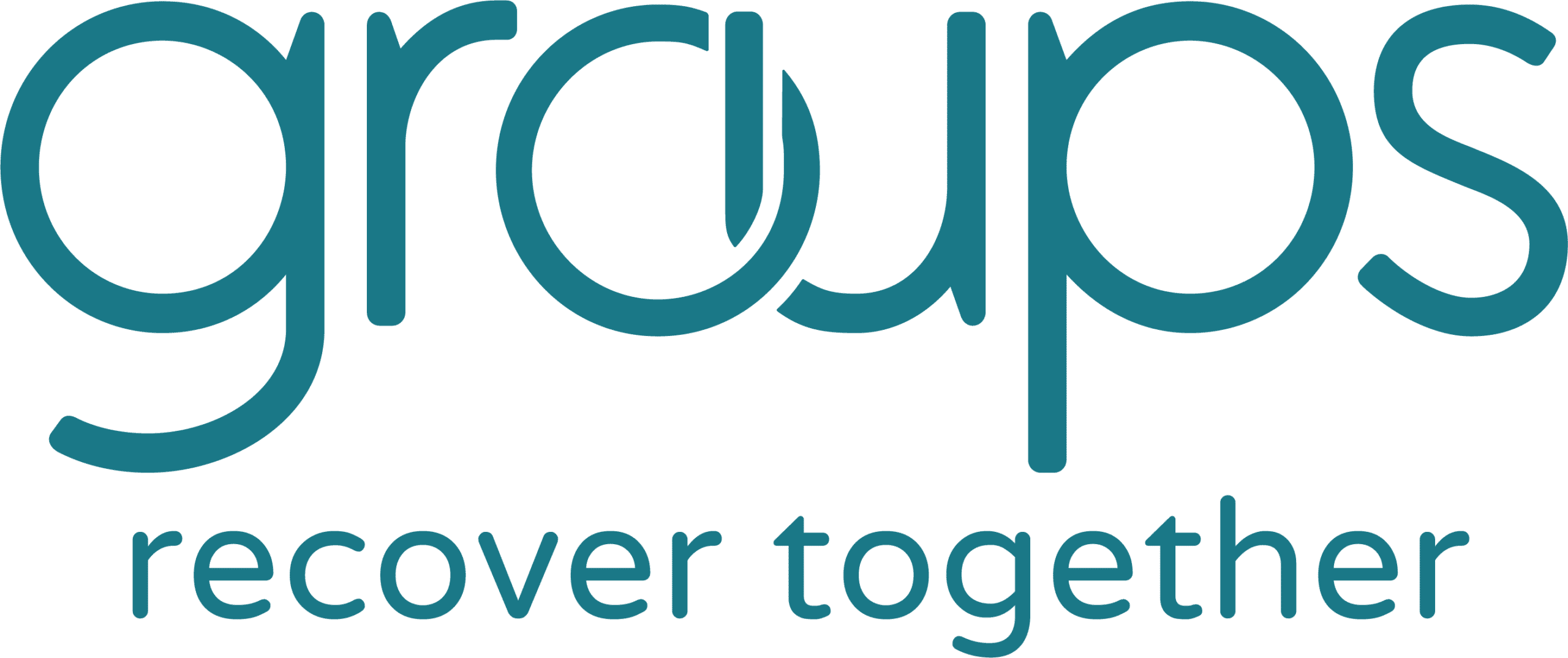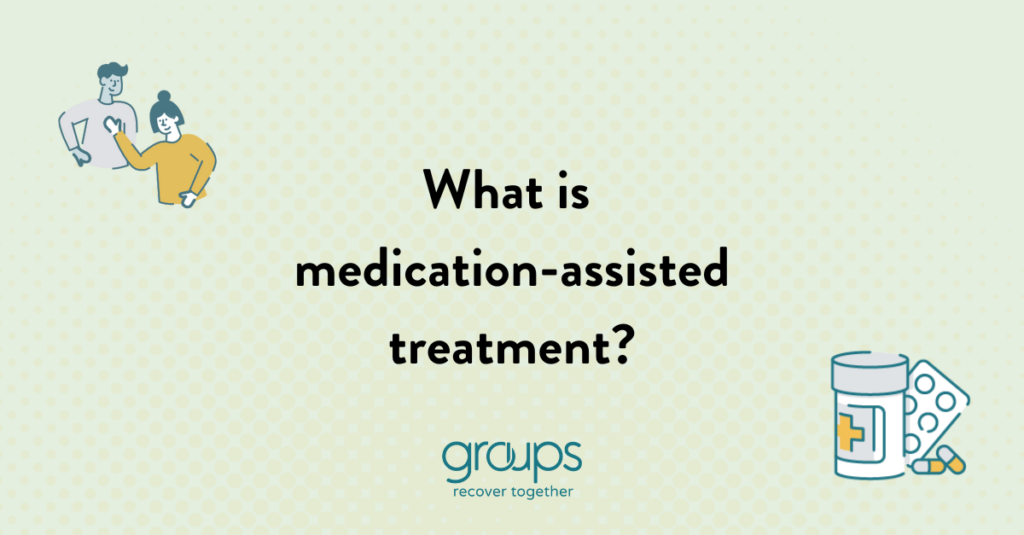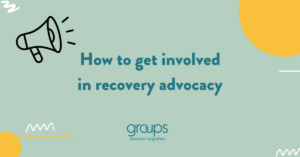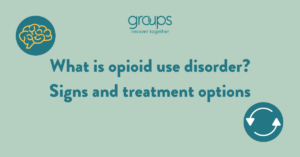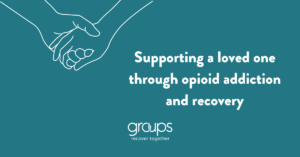When people don’t feel well, physically or mentally, medication can help them feel better. The same is true for those who don’t feel well because of drug cravings or withdrawal.
People who use drugs often face stigma. As a result, there are barriers to medication-assisted treatment (MAT) for opioid use disorders (OUD).
This article is your introduction to MAT. We’re discussing options, how they work, and why access isn’t what it should be.
What you need to know:
- Medication-assisted treatment (MAT) combines medication with therapy. It’s the “gold standard” treatment for OUD.
- FDA-approved MAT may involve methadone, buprenorphine-naloxone (Suboxone), or naltrexone (Vivitrol).
- MAT is not “trading one drug for another.” It’s a medical treatment that helps with cravings, withdrawal, and brain function.
- Groups Recover Together offers MAT with weekly group therapy and support for life goals.
What is MAT?
MAT is the use of medication, often with counseling or therapy, as treatment for OUD. It’s considered the “gold standard” for OUD.
The medicine helps reset people’s brain chemistry and deal with cravings and withdrawal symptoms. It’s an effective way to stop using without feeling sick.
MAT is now often called medication for opioid use disorder (MOUD). Experts say the term “MAT” suggests that medication is secondary to addiction treatment. Using “MOUD” centers medicine as a critical tool for overcoming addiction.
What MAT is available for opioid use disorder?
FDA-approved MAT may use methadone, buprenorphine-naloxone (Suboxone), or naltrexone (Vivitrol).
Methadone
Methadone is a long-acting full opioid agonist. That means it creates the full effects of using opioids. Methadone decreases cravings and withdrawal symptoms, and dulls or blocks the effects of opioids.
Methadone can reduce the use of other opioids by 33%. People who use methadone may also be more than four times more likely to stay in treatment than those who don’t.
Naltrexone
Naltrexone is a medication used to treat both OUD and alcohol use disorder (AUD). It is a complete opioid antagonist, which means it blocks the effects of using opioids. Naltrexone binds to opioid receptors and reduces opioid cravings.
People who take naltrexone may be 55% more likely to stop using other opioids. They may also stay in treatment for longer. However, before starting naltrexone, people must first stop using all other opioids, which can be challenging due to the withdrawal symptoms this causes.
Buprenorphine-naloxone (Suboxone)
Buprenorphine-naloxone, also known as Suboxone, is a long-acting partial opioid agonist. That means the effects are not as strong as full agonists like methadone, fentanyl, heroin, or pain pills. The effects also last for longer than other opioids.
Buprenorphine-naloxone decreases cravings and withdrawal symptoms, helping people get back to their “normal.” When taken as prescribed, it doesn’t make you feel “high.”
Buprenorphine-naloxone and methadone have similar levels of effectiveness. However, buprenorphine-naloxone is much more convenient to access. It is available at most pharmacies, while methadone is only available at a limited number of highly regulated “opioid treatment programs” (OTP). People who take methadone need to go to the OTP every day for dosing.
Buprenorphine-naloxone must be prescribed in large enough doses to be effective. Recent research shows that higher doses of buprenorphine-naloxone lead to better treatment outcomes.
We prescribe buprenorphine-naloxone (Suboxone) for MOUD at Groups. Dosages depend on a member’s unique circumstances and history.
The stigma surrounding MAT
The stigma against MAT prevents many people from finding their best paths to recovery.
MAT isn’t “trading one drug for another”
A common myth is that MAT is “trading one drug for another.” Taking these medications is no different from taking medication for other health issues. Medications used to treat OUD are long acting. They’re designed to mimic normal brain chemistry. In doing this, they help treat withdrawal symptoms and control cravings.
“Addiction is about more than just taking a drug. It’s about the behaviors that you exhibit when you take that drug,” explains Groups founder Dr. Jeff De Flavio. “With Suboxone … those behaviors virtually disappear. What we see is a complete restoration of life that the person who’s dependent on opiates has been hoping for for a long time.”
MAT stigma can lead to legal issues
The stigma around MAT also makes its way into the legal system. On at least one occasion, a U.S. judge has required that someone stop using methadone or go to jail. Some new parents have been separated from their babies due to safe Suboxone use in pregnancy. The reason? A child welfare law removed the “illegal” from the kinds of drugs that warrant a flag to child protective services.
MAT stigma varies by medication
While all effective, the different forms of MAT have been judged to varying degrees. Methadone is a “Schedule II” narcotic. Because of this, it’s more regulated than other OUD medicines. Suboxone, for example, is a “Schedule III.” Methadone regulation means it’s only available at methadone clinics. People have to go to clinics daily and deal with long lines. For these reasons, some call methadone “liquid handcuffs.”
There are also racial disparities in access to MAT. Methadone clinics are more affordable than providers who prescribe Suboxone. As a result, people of color are more likely to use methadone. White people are more likely able to access Suboxone.
Going to a methadone clinic is more public than seeing a provider. This can contribute to the stigma someone encounters. Whatever the medicine, Black people with OUD may already face stigma in healthcare.
MAT saves lives and supports people’s recovery goals. Everyone should have access to whatever form of MAT works best for them. Like any form of medicine, MAT shouldn’t be judged or stigmatized.
The history of MAT
The history of MAT goes back to the 1940s and 1950s. Methadone was created as a pain medication before World War II. In 1949, methadone was known as the most effective medicine for heroin withdrawal. But after treatment, as many as 9 in 10 people would return to using drugs.
After World War II, heroin use and related overdose deaths increased. Throughout the 1950s and early 1960s, experts recommended that outpatient clinics try narcotics for OUD. The government became involved in funding this research.
Methadone maintenance
The first successful example of MAT was in 1964 with methadone maintenance. When people took methadone long term, they no longer felt the drug effects that made them want to use again. The patients were able to relieve their cravings while going to school or working. And if they were to use heroin again, the drug’s effects would decrease. This included the dangerous risk of breathing issues. Through their studies, researchers were able to land on the safest and most effective doses.
By the late 1960s, methadone received Investigational New Drug status from the FDA. At this time, all government-funded methadone programs collected patient data. The research suggested that the treatment model should expand nationwide.
However, in 1970, President Nixon signed a stigmatizing new law classifying drugs by “schedules.” The following year, the Special Action Office for Drug Abuse Prevention (SAODAP) was formed. The SAODAP published guidelines on outpatient methadone maintenance.
A new MAT option: naltrexone
In 1972, Congress passed a law to develop new OUD treatments. At the start of the 1980s, testing finished for a new option: naltrexone. Naltrexone was first created in 1963 and approved for OUD treatment in 1984. By 1995, it was also approved for alcohol use disorder.
The 1990s and early 2000s saw more advances in OUD treatment. In 1997, a National Institutes of Health (NIH) panel advocated for more methadone programs. Then, in 2000, the Drug Addiction Treatment Act allowed more providers to prescribe MAT.
Buprenorphine and Suboxone
In 2002, the FDA approved buprenorphine and Suboxone for OUD treatment. Suboxone combines buprenorphine with a shorter-acting version of naltrexone. The medications were developed in the 1960s to be like codeine with fewer side effects.
MAT expansion
The 2016 Drug Addiction Treatment Act further expanded who could prescribe OUD medication and where it could be prescribed. During the pandemic, regulations loosened again. Medication could be prescribed and refilled via telemedicine. The update remains in effect until November 11, 2023. Through November 11, 2024, anyone who started prescriptions via telemedicine can continue them virtually.
MAT at Groups Recover Together
Groups Recover Together is a leading provider of treatment for people with OUD. Our caring doctors prescribe Suboxone to help members stop using without feeling sick. Compared to methadone, Suboxone has fewer side effects and safety concerns. It’s also easier to lower the dose over time, which may be part of some people’s journeys. Unlike methadone, Suboxone doesn’t require daily visits to a clinic. Groups offers virtual or in-person care. This means that members can meet with providers and get their medicine however is most comfortable for them.
On top of access to MAT online or in person, members meet weekly with local peers and trained counselors. All members can also get help with life goals beyond recovery. Groups can assist with housing, healthcare, food, jobs, education, transit, and more.
Our research shows that people receiving MOUD at Groups are 3.5 times less likely to die by overdose than others taking MOUD outside of Groups.
We believe that anyone who wants addiction treatment should be able to get it. Treatment at Groups is covered by most insurance and Medicaid plans.
Interested in learning more about whether MAT at Groups could be right for you? Give us a call 24/7/365 to speak with one of our Recovery Support Specialists.
